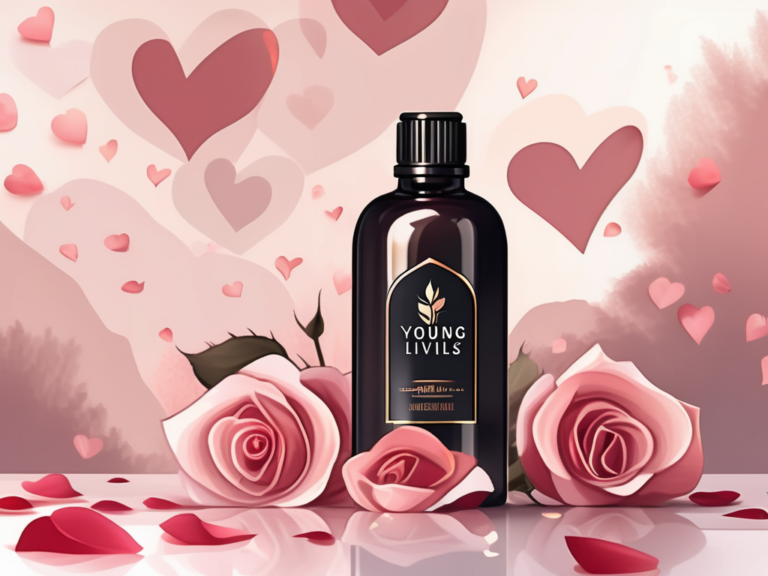The Ultimate Guide to Essential Oils: Liquid Xanax
In today’s fast-paced and stressful world, finding effective ways to combat anxiety and promote relaxation is crucial. Enter essential oils, nature’s gift to calm your mind and soothe your senses. In this ultimate guide, we will delve into the world of essential oils and explore their incredible power, with a special focus on a popular blend known as Liquid Xanax. Get ready to embark on a journey of tranquility and discover the secrets of essential oils!
Understanding Essential Oils
Before we dive into the wonders of Liquid Xanax, let’s first understand what essential oils are all about. Derived from plants, these highly concentrated oils capture the essence and fragrance of various botanicals. Through a process known as steam distillation, essential oils are extracted from flowers, leaves, bark, and other plant parts.
What are Essential Oils?
Essential oils are volatile compounds that possess the characteristic aroma and beneficial properties of the plants they are derived from. They are not only used for their captivating fragrance but also for their therapeutic effects on the mind and body.
The Science Behind Essential Oils
Behind the enchanting scents lie powerful chemical constituents that contribute to the therapeutic properties of essential oils. These constituents interact with our olfactory system and can also be absorbed through the skin, blending science and nature to promote well-being.
Different Types of Essential Oils
The world of essential oils is vast, with a multitude of options to choose from. From soothing lavender to invigorating peppermint, each essential oil offers its own unique benefits. We will explore some of the most popular essential oils and their uses throughout this guide.
Let’s start with lavender, one of the most beloved essential oils. Known for its calming properties, lavender oil has been used for centuries to promote relaxation and improve sleep quality. Its gentle floral scent can help reduce stress and anxiety, making it a popular choice for aromatherapy.
Another popular essential oil is peppermint. With its refreshing and invigorating aroma, peppermint oil is often used to boost energy and improve focus. It can also help alleviate headaches and soothe digestive discomfort, making it a versatile addition to any essential oil collection.
The Power of Aromatherapy
Now that we have a grasp on essential oils, let’s delve into the fascinating realm of aromatherapy. With a history spanning thousands of years, aromatherapy harnesses the power of scents to promote emotional and physical well-being.
The History of Aromatherapy
Aromatherapy traces its roots back to ancient civilizations, where fragrant botanicals were used for religious rituals and healing purposes. The practice has evolved over time, and today, aromatherapy is widely recognized for its therapeutic benefits.
In ancient Egypt, for example, aromatic substances were highly valued and used in religious ceremonies, embalming rituals, and cosmetics. The Egyptians believed that these fragrances had the power to connect the physical and spiritual realms, and they used them to honor their gods and communicate with the divine.
Similarly, in ancient China, aromatherapy was an integral part of traditional medicine. The Chinese believed that different scents had specific healing properties and could be used to restore balance in the body. They used aromatic herbs and oils to treat various ailments and promote overall well-being.
How Aromatherapy Works
When essential oils are inhaled or applied to the skin, they stimulate sensory receptors that send signals to the brain. This activates various brain areas, influencing emotions, hormones, and other physiological processes. Aromatherapy provides a holistic approach to well-being, addressing both the mind and body.
For example, when you inhale the scent of lavender essential oil, it can have a calming effect on the nervous system, reducing anxiety and promoting relaxation. On the other hand, the scent of citrus oils like lemon or orange can have an uplifting and energizing effect, helping to improve mood and increase focus.
When applied topically, essential oils can also have direct effects on the body. For instance, peppermint oil has been shown to relieve headaches and muscle pain when applied to the temples or affected areas. The molecules in the oil penetrate the skin and interact with the body’s receptors, providing localized relief.
Benefits of Aromatherapy
Aromatherapy offers a wide range of benefits, including stress reduction, improved sleep, enhanced mood, and decreased anxiety. Whether you need an energy boost or a moment of tranquility, there’s an essential oil blend for every situation.
In addition to its emotional and mental benefits, aromatherapy can also support physical health. Some essential oils, such as tea tree oil, have antimicrobial properties and can help fight off bacteria and viruses. Others, like eucalyptus oil, can help relieve congestion and promote respiratory health.
Furthermore, aromatherapy can be used to complement other forms of therapy or treatment. It can enhance the effects of massage therapy, acupuncture, or yoga, creating a more holistic and integrated approach to healing and well-being.
Introduction to Liquid Xanax
Welcome to our comprehensive guide on Liquid Xanax, the ultimate solution for those seeking relief from anxiety and stress. In this expanded version, we will delve deeper into the secrets behind its calming powers and explore the fascinating world of natural alternatives.
Imagine a world where anxiety melts away, and stress becomes a distant memory. Liquid Xanax is here to make that a reality. This specially formulated blend of essential oils is carefully crafted to provide a natural alternative for those in need. No more relying solely on pharmaceutical interventions; now you can embrace the power of nature.
What is Liquid Xanax?
At its core, Liquid Xanax is a harmonious blend of essential oils renowned for their calming and anxiety-reducing properties. This unique combination is a symphony of relaxation, designed to alleviate the burdens of anxiety without any unwanted side effects.
Picture a serene garden filled with the most soothing scents nature has to offer. Lavender, chamomile, bergamot, and frankincense come together in perfect harmony to create Liquid Xanax. Each of these oils brings its own special touch, contributing to the overall tranquility and serenity of this remarkable blend.
The Ingredients of Liquid Xanax
Let’s take a closer look at the natural wonders that make up Liquid Xanax. Lavender, known for its calming properties, gently lulls the mind into a state of relaxation. Chamomile, with its delicate floral aroma, eases tension and promotes a sense of peace. Bergamot, with its citrusy notes, uplifts the spirit and helps to alleviate anxiety. And finally, frankincense, a resinous treasure, grounds the mind and brings a sense of deep tranquility.
These ingredients, carefully selected for their individual benefits, work together in perfect synergy to create a blend that is greater than the sum of its parts. Liquid Xanax is a testament to the power of nature and its ability to provide solace in times of distress.
How Liquid Xanax Works
Now, let’s uncover the science behind the magic. As you inhale or apply Liquid Xanax, the aromatic molecules of the essential oils interact with receptors in your brain. This interaction triggers a cascade of calming signals, promoting a profound sense of calm and tranquility.
Imagine taking a deep breath of relaxation, as if the weight of the world is lifted off your shoulders. That’s the experience Liquid Xanax offers. It’s like a gentle embrace from nature itself, soothing both the mind and body in its comforting arms.
So, whether you’re seeking respite from the daily stresses of life or looking for a natural alternative to pharmaceutical interventions, Liquid Xanax is here to guide you towards a state of serenity. Embrace the power of nature and unlock the secrets of tranquility with this remarkable blend.
Using Essential Oils for Anxiety
Anxiety can be debilitating, but essential oils offer a natural way to find relief. Let’s explore why essential oils are an excellent choice for anxiety management and discover some of the best oils for this purpose.
Anxiety is a common mental health condition that affects millions of people worldwide. It can manifest as persistent worry, fear, and unease, making it challenging to lead a fulfilling and peaceful life. While there are various treatment options available, many individuals are turning to essential oils as a holistic approach to managing anxiety.
Why Use Essential Oils for Anxiety?
Essential oils provide a gentle and holistic approach to managing anxiety. Unlike synthetic medications, they pose minimal risks of side effects and dependence. This makes them an attractive option for those seeking natural remedies. Additionally, essential oils have been used for centuries in traditional medicine practices for their therapeutic properties.
When inhaled or applied topically, essential oils can stimulate the olfactory system and trigger emotional responses in the brain. This can help promote relaxation, reduce stress levels, and alleviate anxiety symptoms. The soothing aroma of essential oils can create a calming environment, allowing individuals to find moments of tranquility amidst the chaos of everyday life.
Best Essential Oils for Anxiety
When it comes to combatting anxiety, some essential oils shine brighter than others. Lavender, with its soothing and calming properties, takes the center stage. The floral scent of lavender has been shown to reduce anxiety levels and improve sleep quality. Other oils like chamomile, ylang-ylang, and bergamot also make valuable contributions to anxiety relief.
Chamomile, known for its gentle and relaxing aroma, can help calm the mind and promote a sense of peace. Ylang-ylang, with its sweet and exotic fragrance, has been used for centuries to reduce feelings of stress and anxiety. Bergamot, a citrus oil, is known for its uplifting properties and can help improve mood and alleviate tension.
How to Use Essential Oils for Anxiety
There are various ways to incorporate essential oils into your anxiety management routine. Inhalation, topical application, and even diffusion are all effective methods. Inhalation can be done by adding a few drops of essential oil to a diffuser or inhaling directly from the bottle. Topical application involves diluting the essential oil with a carrier oil and massaging it onto the skin.
Diffusing essential oils in your home or workspace can create a calming and peaceful atmosphere. This can be especially beneficial for individuals who experience anxiety in certain environments. Additionally, you can add a few drops of essential oil to a warm bath or mix them with a carrier oil for a relaxing massage.
It’s important to note that essential oils are highly concentrated and should be used with caution. It’s recommended to do a patch test before applying them to the skin and to consult with a healthcare professional if you have any underlying health conditions or are taking medications.
Find the approach that resonates with you and let the transformative power of essential oils guide you towards serenity. Remember, everyone’s experience with essential oils may vary, so it’s essential to listen to your body and find what works best for you.
Safety and Precautions
While essential oils are generally safe and well-tolerated, it’s essential to use them responsibly. Let’s explore some safety guidelines to ensure that you fully enjoy the benefits of essential oils without any unwanted effects.
When it comes to essential oils, it’s important to be aware of possible side effects. While rare, some individuals may experience sensitivity or allergic reactions to certain oils. This is why it’s always advisable to perform a patch test before using a new oil and to consult a healthcare professional if you have any concerns. By taking these precautions, you can ensure that your experience with essential oils is a positive one.
Possible Side Effects of Essential Oils
Essential oils are potent and should be used with caution. Although they offer numerous benefits, it’s crucial to be aware of the potential side effects. Some oils may cause skin irritation or photosensitivity in certain individuals. Others may trigger respiratory issues or headaches in sensitive individuals. By being mindful of these possibilities, you can make informed choices and minimize any risks.
Who Should Avoid Essential Oils?
While essential oils can be beneficial for many, there are certain individuals who should exercise caution or avoid their use altogether. Pregnant women, for example, should consult with their healthcare provider before incorporating essential oils into their routine. Certain oils may have contraindications during pregnancy and could potentially harm the developing baby. Similarly, young children have more delicate skin and respiratory systems, so it’s important to consult with a pediatrician before using essential oils on or around them. Additionally, individuals with specific medical conditions, such as epilepsy or asthma, should seek guidance from their healthcare provider to ensure the safe use of essential oils.
Tips for Safe Use of Essential Oils
To ensure safe and enjoyable use of essential oils, it’s essential to follow a few simple guidelines. First and foremost, always dilute oils before topical use. This helps to prevent skin irritation and allows for better absorption. Additionally, it’s important to store essential oils properly. They should be kept in dark glass bottles, away from direct sunlight and extreme temperatures, to maintain their potency and extend their shelf life. Lastly, sourcing high-quality oils from reputable suppliers is crucial. This ensures that you are using oils that are pure, free from contaminants, and obtained through ethical and sustainable practices.
By following these safety guidelines and using essential oils responsibly, you can fully enjoy their therapeutic benefits while minimizing any potential risks. Remember, knowledge and caution are key when it comes to incorporating essential oils into your wellness routine.
Making Your Own Liquid Xanax
Ready to unleash your creativity and create your own liquid oasis of tranquility? Making your own Liquid Xanax is both empowering and cost-effective. Here’s a step-by-step guide to help you craft your personalized blend.
Imagine a world where stress melts away, and a sense of calm washes over you like a gentle wave. With your own homemade Liquid Xanax, this dream can become a reality. By carefully selecting the right combination of essential oils, you can create a powerful elixir that will transport you to a state of deep relaxation.
Essential Oils Needed for Liquid Xanax
To create your own Liquid Xanax, you’ll need a selection of essential oils known for their relaxation properties. Lavender, chamomile, and bergamot are popular choices, but feel free to experiment with other oils that resonate with you. Each oil has its own unique benefits, from lavender’s soothing properties to chamomile’s ability to calm the mind.
Imagine the gentle aroma of lavender enveloping you, transporting you to a field of purple blooms swaying in the breeze. Or picture yourself surrounded by the delicate scent of chamomile, as if you were lying in a meadow on a warm summer day. The possibilities are endless when it comes to creating your own Liquid Xanax blend.
Step-by-Step Guide to Making Liquid Xanax
You don’t need to be a master alchemist to create your own Liquid Xanax. Simply follow these easy steps: gather your essential oils, choose a carrier oil, blend them together, and store your creation in a dark glass bottle. The process is as simple as mixing a few drops of this and a few drops of that, but the results can be truly transformative.
As you carefully blend the oils together, imagine the positive energy flowing through your fingertips. Feel the sense of empowerment as you take control of your own well-being. With each drop, you are creating a powerful tool for self-care and relaxation.
Storing and Using Your Homemade Liquid Xanax
Proper storage is key to preserving the quality and efficacy of your homemade Liquid Xanax. Make sure to store it in a cool, dark place away from direct sunlight. This will help to maintain the potency of the oils and ensure that your relaxation elixir is always ready to transport you to a place of serenity.
When the need arises, apply a few drops to your pulse points, inhale deeply, and let the calming aroma envelop you. Feel the tension melt away as the soothing scent of your homemade Liquid Xanax fills the air. Allow yourself to be carried away to a world of tranquility and peace.
Remember, the power to create your own Liquid Xanax is in your hands. Embrace the journey of self-discovery and find the perfect combination of oils that resonates with your soul. With each drop, you are one step closer to unlocking the secret to inner calm and well-being.
Conclusion
As we conclude our ultimate guide to essential oils and Liquid Xanax, may you carry the knowledge and power of nature’s tranquility in your journey towards a calmer mind and a more relaxed existence. Embrace the potential of essential oils as natural remedies for anxiety and envision a future where the synergistic bond between essential oils and mental well-being continues to flourish. Embrace the serenity within!






